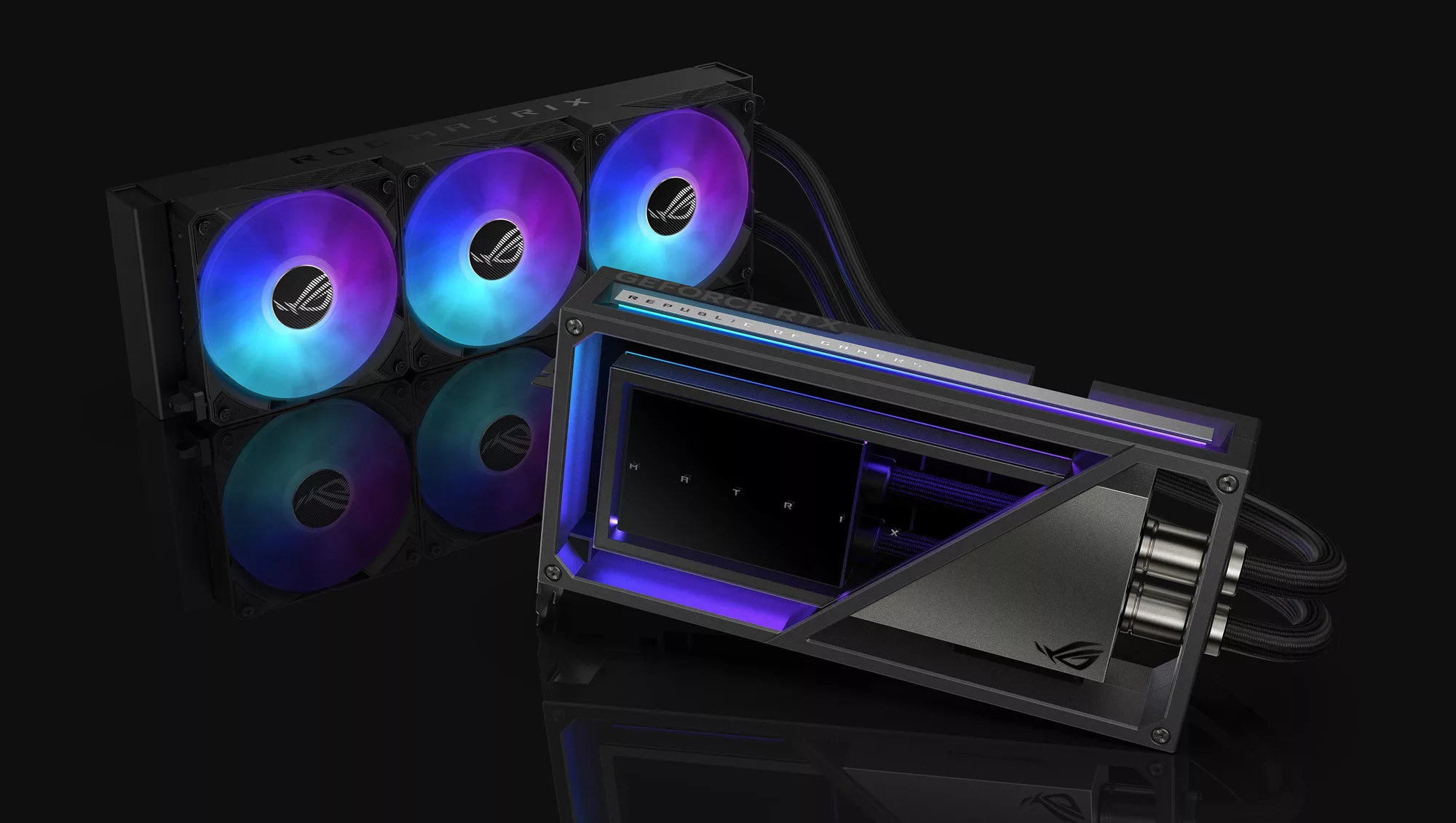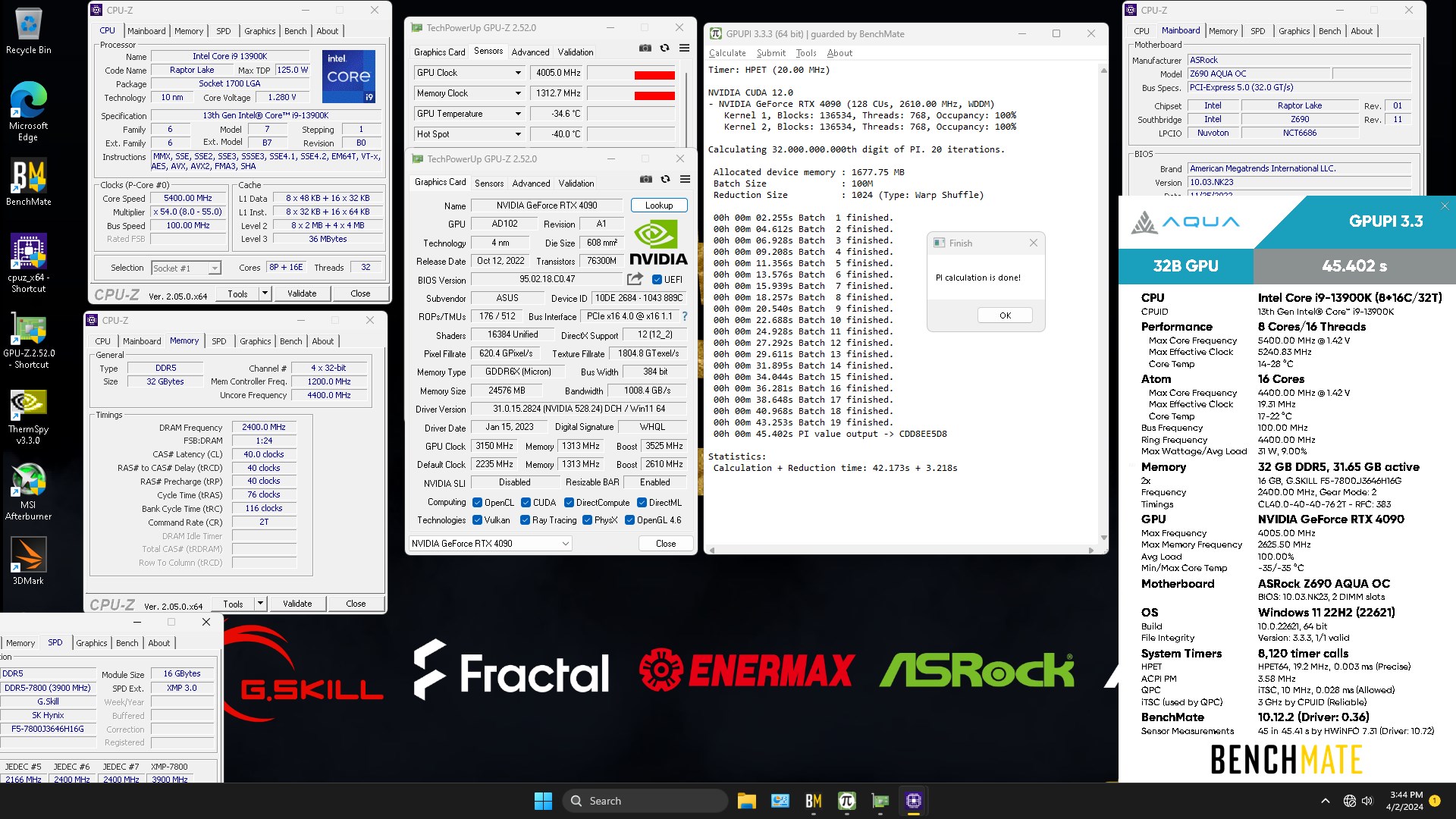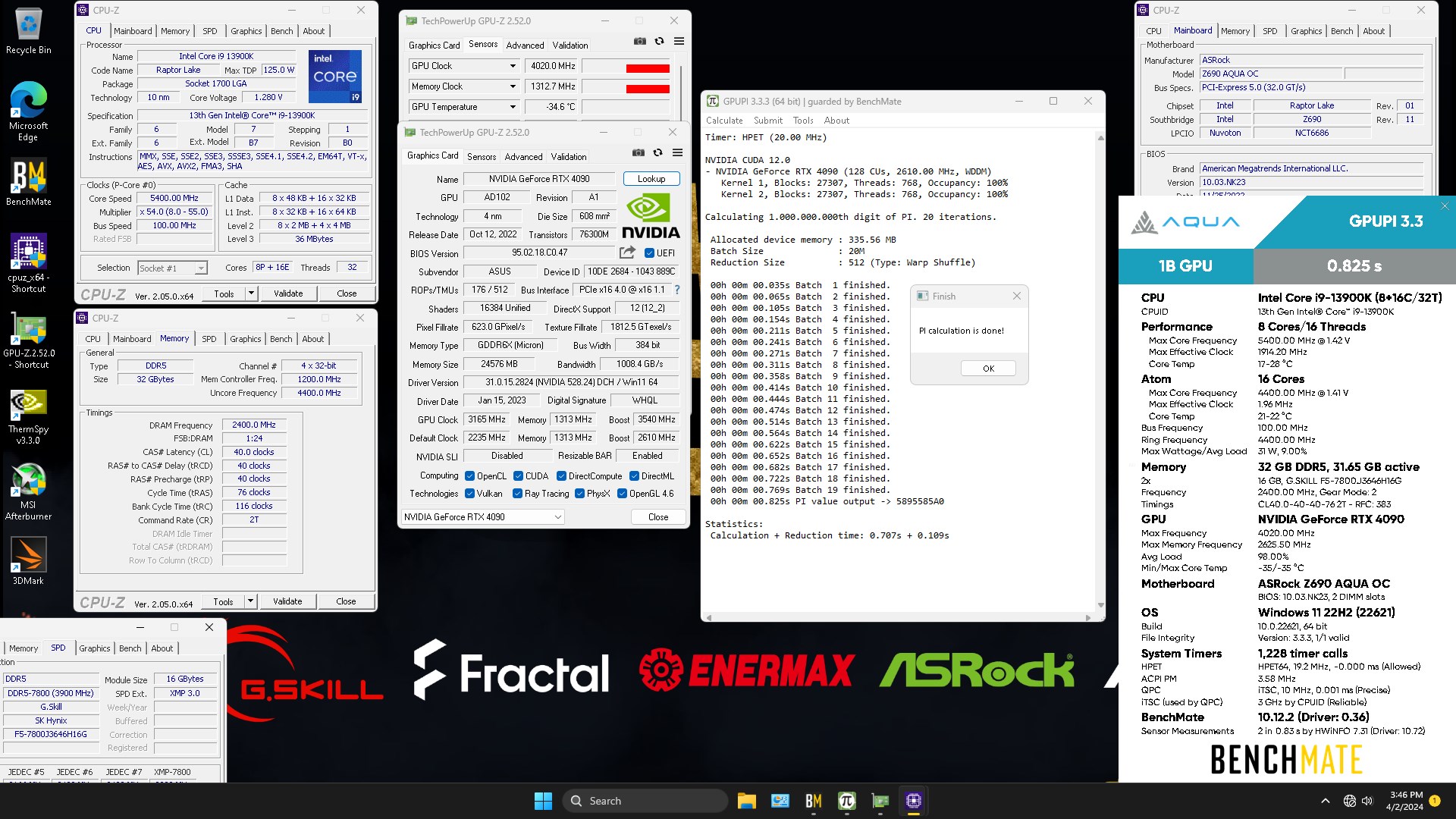
Renowned overclocker Allen 'Splave' Golibersuch has succeeded in overclocking the Asus ROG Matrix GeForce RTX 4090 to a world record 4,005 MHz. This is the first time (although there will now be a flurry of attempts) for a GPU to hit 4 GHz. It comes on the back of a previous attempt which saw the card fall just short (3,945 MHz) of the magic number.
The new world record was set on an Asus ROG Matrix GeForce RTX 4090 graphics card (which may become the best graphics board money can buy when it is released), which features a cherry-picked GPU that is powered by a sophisticated voltage regulating module (VRM) that delivers up to 600W of very clean power (the maximum one can get from one 12VHPWR connector) to the processor. The GPU was cooled down using liquid nitrogen, which is common for extreme overclocking.
The Nvidia AD102 GPU on the graphics card managed to pass the GPUPi 32B 3.3 test at 4,005 MHz and then the GPUPi 1B 3.3 test a 4,020 MHz. GPUPi is certainly not a graphics program, it uses CUDA cores to calculate the value of Pi number to 32 billion and two 1 billion decimal places. Essentially, the workload does not need to overclock fixed function graphics hardware like texture units or render back ends. Nonetheless, 4 GHz on a GPU is quite an achievement.


Last week Splave managed to boost the AD102 graphics processor on the Asus ROG Matrix RTX 4090 to a record-breaking 3,945 MHz. Rather than modifying the card, he simply substituted the original all-in-one liquid cooling system with a Kingpin Cooling TEK-9 Icon Extreme GPU pot designed for LN2, and incorporated three heaters along with three ElmorLabs HOT300 heater controllers. All further adjustments and overclocking were carried out using BIOS configurations and overclocking software.
Nvidia's AD102 was architected to for high clocks. The GPU developer relaxed transistor density, which possibly points to usage of high-performance libraries, so the graphics processor was destined to be fast. Meanwhile, clocking 76.3 billion transistors at 4 GHz is something that is quite unexpected.







